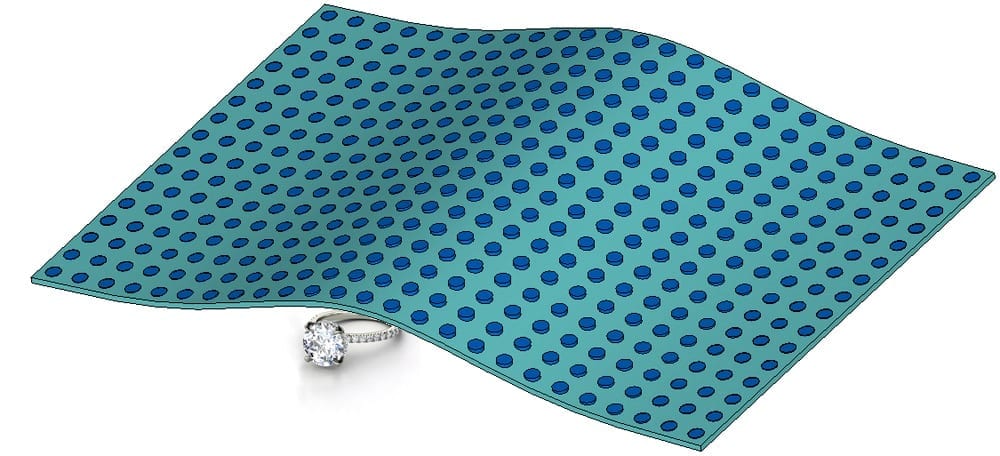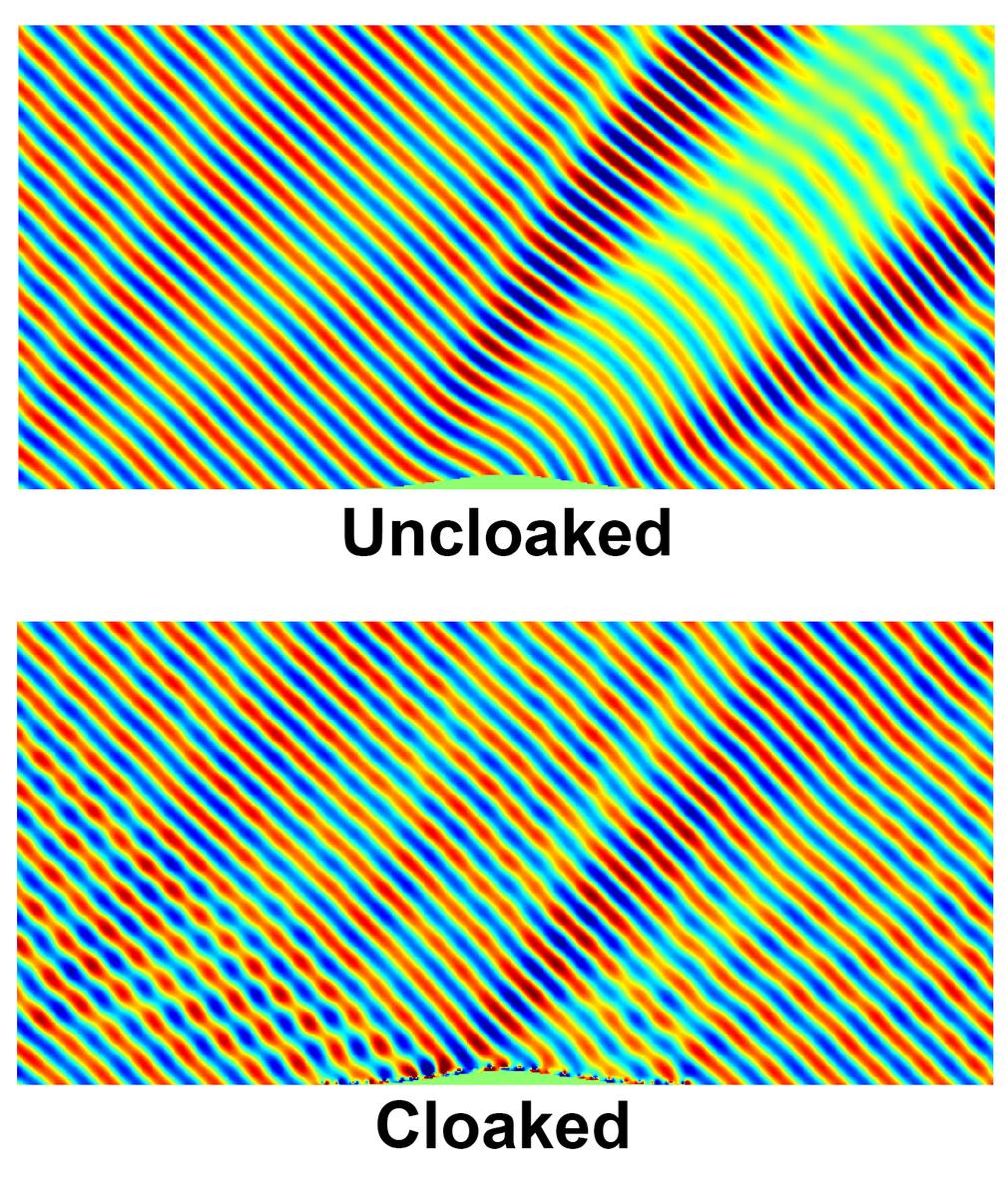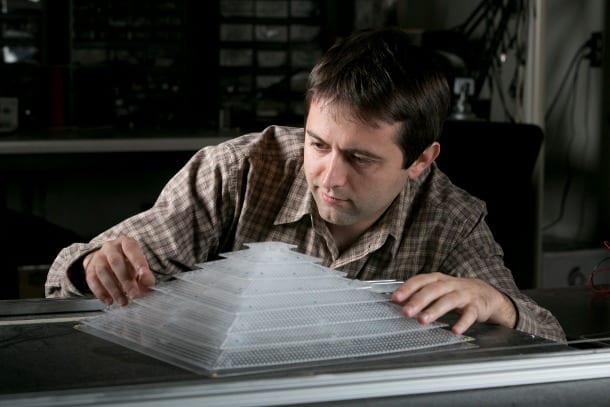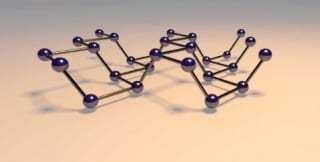
Researchers have developed a new design for a cloaking device that overcomes some of the limitations of existing “invisibility cloaks.”
In a new study, electrical engineers at the University of California, San Diego have designed a cloaking device that is both thin and does not alter the brightness of light around a hidden object. The technology behind this cloak will have more applications than invisibility, such as concentrating solar energy and increasing signal speed in optical communications.
“Invisibility may seem like magic at first, but its underlying concepts are familiar to everyone. All it requires is a clever manipulation of our perception,” said Boubacar Kanté, a professor in the Department of Electrical and Computer Engineering at the UC San Diego Jacobs School of Engineering and the senior author of the study. “Full invisibility still seems beyond reach today, but it might become a reality in the near future thanks to recent progress in cloaking devices.”
As their name implies, cloaks are devices that cover objects to make them appear invisible. The idea behind cloaking is to change the scattering of electromagnetic waves — such as light and radar — off an object to make it less detectable to these wave frequencies.
One of the drawbacks of cloaking devices is that they are typically bulky.
“Previous cloaking studies needed many layers of materials to hide an object, the cloak ended up being much thicker than the size of the object being covered,” said Li-Yi Hsu, electrical engineering Ph.D. student at UC San Diego and the first author of the study, which was recently published in the journal Progress In Electromagnetics Research. “In this study, we show that we can use a thin single-layer sheet for cloaking.”
The researchers say that their cloak also overcomes another fundamental drawback of existing cloaking devices: being “lossy.” Cloaks that are lossy reflect light at a lower intensity than what hits their surface.
“Imagine if you saw a sharp drop in brightness around the hidden object, it would be an obvious telltale. This is what happens when you use a lossy cloaking device,” said Kanté. “What we have achieved in this study is a ‘lossless’ cloak. It won’t lose any intensity of the light that it reflects.”
Many cloaks are lossy because they are made with metal particles, which absorb light. The researchers report that one of the keys to their cloak’s design is the use of non-conductive materials called dielectrics, which unlike metals do not absorb light. This cloak includes two dielectrics, a proprietary ceramic and Teflon, which are structurally tailored on a very fine scale to change the way light waves reflect off of the cloak.
In their experiments, the researchers specifically designed a “carpet” cloak, which works by cloaking an object sitting on top of a flat surface. The cloak makes the whole system — object and surface — appear flat by mimicking the reflection of light off the flat surface. Any object reflects light differently from a flat surface, but when the object is covered by the cloak, light from different points is reflected out of sync, effectively cancelling the overall distortion of light caused by the object’s shape.
“This cloaking device basically fools the observer into thinking that there’s a flat surface,” said Kanté.
Read more: Engineers give invisibility cloaks a slimmer design
The Latest on: Invisibility Cloaks
[google_news title=”” keyword=”Invisibility Cloaks” num_posts=”10″ blurb_length=”0″ show_thumb=”left”]
via Google News
The Latest on: Invisibility Cloaks
- Startup raising money to manufacture invisibility shieldson April 23, 2024 at 6:24 am
The shield was developed by the London-based startup Invisibility Shield Co. and has already raised £148,680, or just over $184,000, on the crowdfunding platform Kickstarter. With a month still left ...
- MIT Technology Reviewon April 22, 2024 at 4:59 pm
Precancerous colon cells turn on a gene that helps them evade the immune system until they develop into tumors. One of the immune system’s roles is to detect and kill cells that have acquired ...
- Realization of an ideal omnidirectional invisibility cloak in free spaceon April 22, 2024 at 10:00 am
A team led by Prof. Dexin Ye and Prof. Hongsheng Chen from Zhejiang University, and Prof. Yu Luo from Nanyang Technological University conducted research on the practical implementation of ...
- Invisibility Shield lets you vanish like magicon April 22, 2024 at 6:11 am
Have you ever wanted to have superpowers? Maybe you wanted immense strength like Superman or extreme speed like the Flash. Perhaps you’re a massive Harry Potter fan who wants to slink into the ...
- You Can Actually Order Your Very Own Invisibility Shield Right Nowon April 20, 2024 at 3:01 am
It's not every day the future arrives early. Robot cars and personal jetpacks might still some time off, but at least you can head over to the Kickstarter crowdfunding site right now and place an ...
- Realization of an ideal omnidirectional cloak in free spaceon April 19, 2024 at 9:49 am
The past decade has witnessed the rapid development of transformation optics, through which various novel optical devices such as invisibility cloaks, electromagnetic illusion devices and ...
- Helping Lone Workers Shed the Invisibility Cloakon April 16, 2024 at 12:09 am
Satellite messaging and GPS technologies help lone workers overcome challenges of invisibility, providing transformative benefits for safety and coordination across industries.
- Scientists solved the 70-year-old mystery of an insect's invisibility coat that can manipulate lighton April 15, 2024 at 10:13 am
A team of researchers created the world's first synthetic brochosomes in a huge step towards invisibility cloaking technology.
- Scientists solved the 70-year-old mystery of an insect's invisibility coat that can manipulate lighton April 14, 2024 at 5:00 pm
We tend to think of invisibility cloaks as science fiction. But one group of scientists has taken a big step toward making them a reality. For the first time, scientists at Pennsylvania State ...
- Real Life Hogwarts? British Firm Unveils 'Invisibility Cloak'on April 3, 2024 at 10:23 am
It claims it can make multiple people invisible, resembling the "invisibility cloak" from the famous children's book and movie franchise, Harry Potter. The shield utilises large panels embedded ...
via Bing News
xxx











